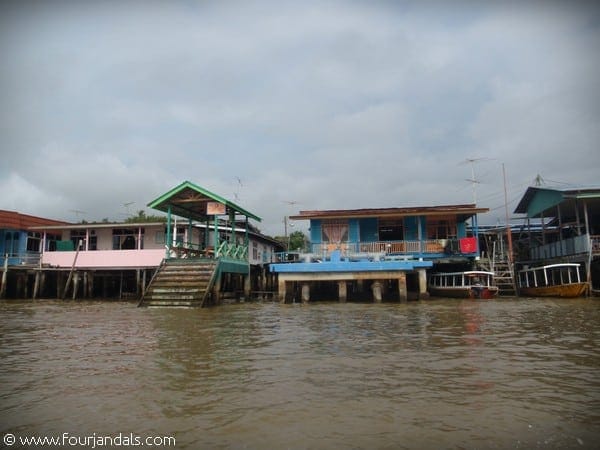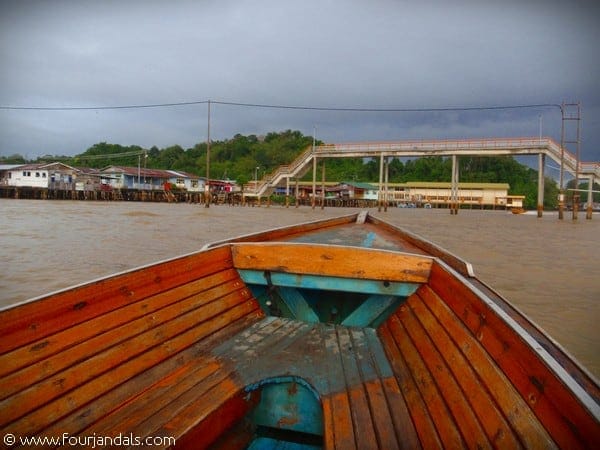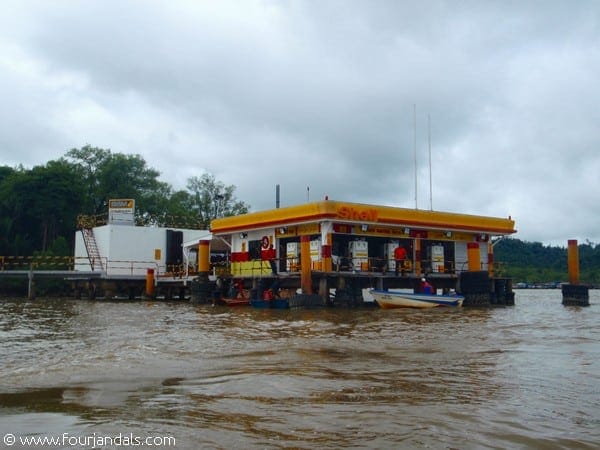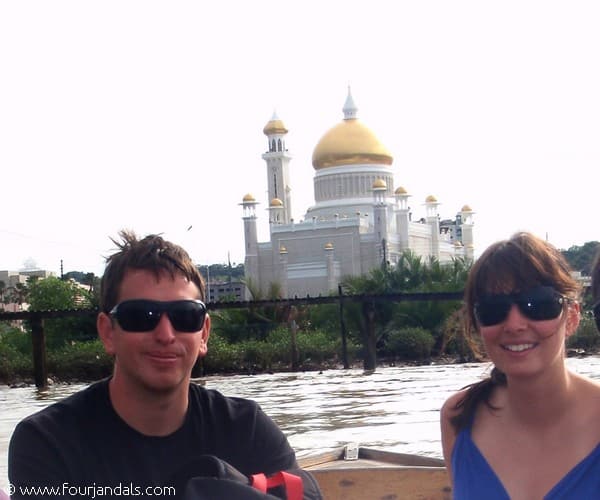We had a 10 hour layover in Brunei on the way back to Edinburgh from New Zealand. We had no idea what to see and do but knew that we had just enough time to jump aboard the local bus and head into the capital city of Bandar Seri Begawan.
Some fellow travellers from Australia suggested we share a boat ride along the Brunei River to get a closeup view of the world’s largest water village – Kampong Ayer. Over 39,000 residents live in 42 villages that are built atop wooden stilts, 29 km of footbridges and 36 km of boardwalks.
With access only by water taxi’s or across the bridges it is a really unique part of the world.
Many of the homes are bright and colourful in contrast to the brown muddy waters.
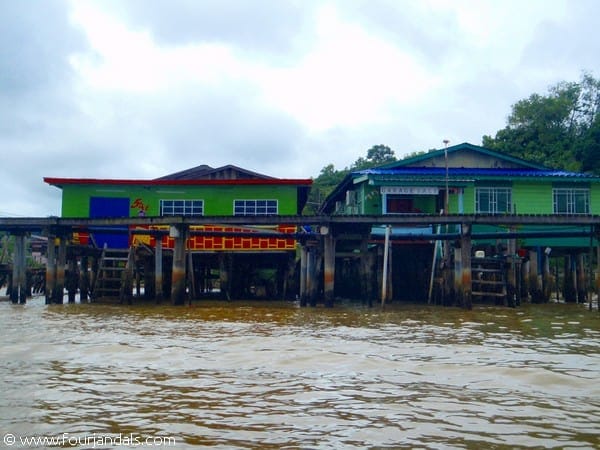 We headed up river and came across barges that looked like they had been abandoned on the river banks. Our driver didn’t seem to mind flying around the ends of them without being able to see if anyone was coming the wrong way. Luckily we only had one close call.
We headed up river and came across barges that looked like they had been abandoned on the river banks. Our driver didn’t seem to mind flying around the ends of them without being able to see if anyone was coming the wrong way. Luckily we only had one close call.
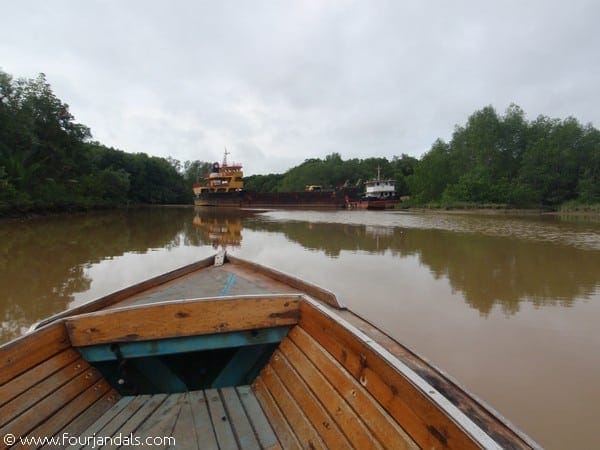 The driver led us up a tiny waterway so we could sit under the trees and watch the local Proboscis monkeys jump around the rainforest. We were there early in the morning which was lucky as during the middle of the day they disappear into the shade. This was ecotourism at it’s best!
The driver led us up a tiny waterway so we could sit under the trees and watch the local Proboscis monkeys jump around the rainforest. We were there early in the morning which was lucky as during the middle of the day they disappear into the shade. This was ecotourism at it’s best!
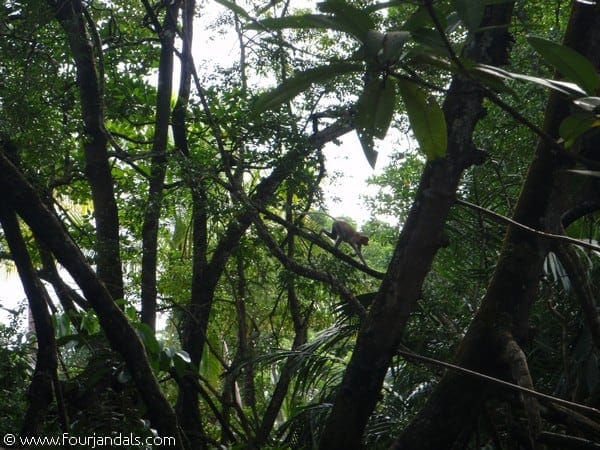 For 1300 years people have lived on the river here and it has become very self-contained with police stations, clinics, a waterborne fire brigade and mosques above the water as well. This was one of the local High Schools with several hundred children catching the “water bus” to school each day.
For 1300 years people have lived on the river here and it has become very self-contained with police stations, clinics, a waterborne fire brigade and mosques above the water as well. This was one of the local High Schools with several hundred children catching the “water bus” to school each day.
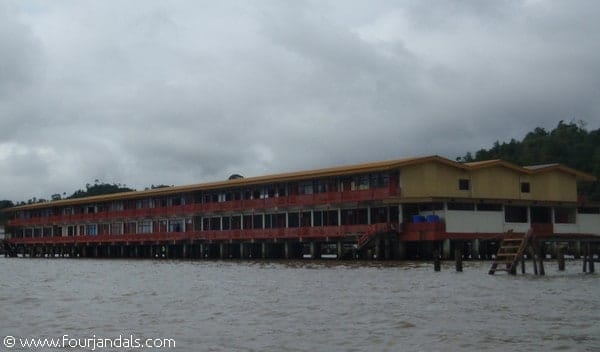 To fill up all these water taxis they of course have the local petrol station from which they pass the hose down to your boat to refuel. Brilliant.
To fill up all these water taxis they of course have the local petrol station from which they pass the hose down to your boat to refuel. Brilliant.
I think one of the best views ever of the Sultan Omar Ali Saifuddin Mosque is from the water. The solid gold dome towers above the city and there are always people praying here. When we returned to land they even let Adela enter in as long as we covered up in traditional robes and removed our shoes.
 Have you ever been here? What about on other river boat tours?
Have you ever been here? What about on other river boat tours?
